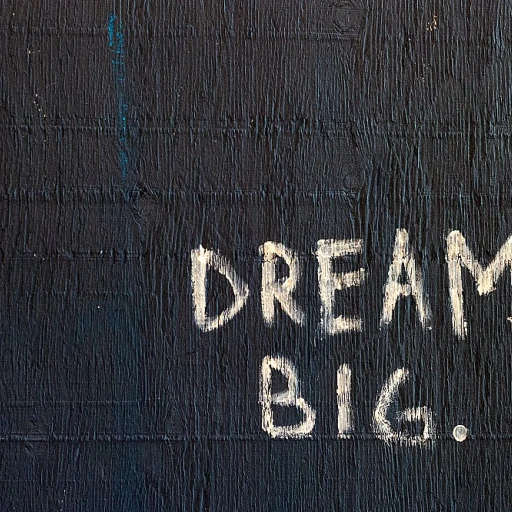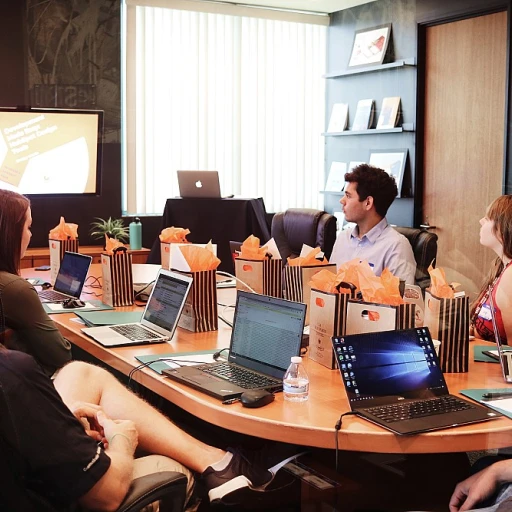The Essence of the Norming Stage
Understanding the Norming Dynamics
The norming stage is a key part of Bruce Tuckman's model of group development, where team members transition from the initial forming stage into more cohesive units. During this phase, the team moves away from the chaos of the storming stage, aligning towards shared goals and establishing new norms of collaboration. This stage is crucial for the success of team development, as it sets the foundation for future productivity and performance.
In this stage, group members begin to resolve the conflicts typical of the storming phase and start working toward building a stronger team identity. Trust and cooperation increase as team members become more comfortable with each other, allowing them to work together more efficiently on projects. The norming stage prepares teams for the performing stage, where they can achieve high levels of functioning.
This stage is about creating cohesion among team members and finding a rhythm that works for everyone. The development of these norms is essential as it lays the groundwork for engaging employees more effectively, helping team members feel valued and connected.
As teams solidify understanding and build on trust, it is critical that leaders focus on recognizing contributions and fostering an environment that encourages open communication. Looking into challenges that might arise during this stage, as well as best practices for enhancing engagement, can further optimize this crucial period of team development.
How Norming Impacts Employee Engagement
Enhancing Engagement through Team Cohesion
The norming stage marks a critical juncture in Tuckman's model, where team members start to cultivate a stronger sense of unity and collaboration. This stage serves as a transformative phase in group development. It connects the often chaotic storming stage with the productivity of the performing stage. During norming, group members begin to resolve conflicts that may have arisen earlier, paving the way for enhanced cooperation and higher levels of employee engagement.
One of the key benefits of the norming stage is the establishment of high-functioning teams. As communication within the group strengthens, team members develop a clearer understanding of their roles and responsibilities. This clarity not only increases efficiency in work projects but also fosters a sense of belonging among members.
In this stage, it's essential that the team leader facilitates opportunities for members to connect on a personal level. Encouraging team-building activities and discussions can break down existing barriers. Engaging employees with fun ice breaker questions can be an effective strategy to further solidify trust and camaraderie.
The norming stage also highlights the importance of developing interpersonal relationships within the team. Cultivating a supportive environment allows members to feel secure in expressing their ideas and collaborating on tasks. This, in turn, contributes to not only the immediate success of the team but also the long-term sustainability and engagement within the organization.
Challenges in the Norming Stage
Common Obstacles Faced During the Norming Stage
The norming stage, as per Bruce Tuckman's model, is a critical phase of group development where team members begin to find cohesion and harmony after experiencing the turbulence of the storming stage. However, this part of team development is not without its challenges, and understanding these hurdles is vital for maximizing team engagement and moving smoothly toward the performing stage. One of the primary challenges is overcoming residual conflicts stemming from the storming stage. It's not uncommon for team members to carry lingering feelings or unresolved issues into the norming stage. Without proper conflict resolution mechanisms, these can resurface, hampering team progress. Team leaders play a crucial role here, facilitating open communication and encouraging employees to voice any concerns. Time is another factor. Some teams may struggle to balance maintaining high performance with allowing enough time for group members to settle into new norms. The pressure to progress quickly into the performing stage might lead to rushing this stage, resulting in an unstable foundation. Establishing clear roles and responsibilities can be difficult as teams transition through the Tuckman stages. In the norming phase, members often negotiate and redefine their roles, looking to strike the right balance of authority and contribution. Without clear guidance, this adjustment can lead to confusion and reduced productivity. Moreover, team leaders might face challenges in striking the right level of involvement. Overinvolvement can hinder the group's natural development, while underinvolvement might result in the team reverting to storming behaviors. Leaders must find the right balance to encourage autonomy while offering support when needed. In high-pressure work environments, the anxiety of upcoming deadlines or major deliverables can overshadow the benefits of this developmental phase. Ensuring that team members feel supported and focused is essential to fostering engagement. For more strategies to boost motivation during such times, consider exploring how to boosting motivation in customer service roles. By addressing these challenges proactively, teams can harness the potential of the norming stage to lay down a robust foundation for future success in the performing stage.Role of Leadership During Norming
Guiding Light: Leadership's Vital Role in the Norming Stage
In the journey of team development through Tuckman’s stages, leadership takes on a critical role during the norming stage. As teams work to settle into their established norms, a leader’s influence can make the difference between a cohesive, high-performing group and one that struggles to move beyond conflict and miscommunication. Understanding that the norming stage is a delicate phase, leaders must be mindful of several crucial actions:- Facilitating Open Communication: Encouraging dialogue among team members to address any lingering issues from the storming stage is essential. Leaders must support an environment where everyone feels comfortable sharing insights.
- Reinforcing Team Values and Goals: As the team solidifies its norms, reinforcing the shared vision, and objectives helps members stay focused on the collective goals of the project.
- Empowering Autonomy: While guidance is important, empowering team members to take initiative within agreed-upon boundaries fosters a sense of ownership and motivates them to contribute fully.
- Recognition and Support: Acknowledging achievements during this stage boosts morale and encourages continued progress toward the performing stage.
- Managing Conflicts Constructively: Conflict may still arise, and leaders should address these issues promptly, drawing from strategies employed during the storming stage.
Best Practices for Maximizing Engagement
Enhancing Team Cohesion in the Norming Stage
Understanding how to maximize employee engagement during the norming stage of team development can significantly enhance overall productivity and job satisfaction. This phase, where team members start to resolve conflicts and solidify a cohesive way of working, offers a prime opportunity to bolster engagement. To make the most of this stage, it's essential to focus on specific practices:- Encouraging Open Communication: Facilitate an environment where group members feel comfortable sharing ideas and providing feedback. Open dialogue helps strengthen relationships and fosters trust among team members.
- Reinforcing Team Roles and Responsibilities: Clarity in roles can help to solidify the norms established during this stage team. Reinforcing these helps ensure each member knows their contribution to the group development, minimizing potential confusion and conflicts.
- Celebrating Milestones: Recognize successes and achievements of the group members in the forming storming, norming performing progression. Whether minor accomplishments or significant breakthroughs, acknowledging these milestones can boost morale and motivation.
- Continuous Learning and Development: Offering opportunities for professional development can be highly engaging for team members. Encouraging team members to continually learn ensures fresh ideas and perspectives are brought to the table.
- Facilitating Team Building Activities: During the norming stage, group members thrive on the sense of belonging. Engaging in activities that promote team spirit can strengthen bonds and make transitioning to the performing stage smoother.
Case Studies: Successful Norming in Action
Examples of Thriving Teams in the Norming Stage
The journey from forming to performing in a group is marked by a significant transition during the norming stage, where teams often experience increased collaboration and unity. This comes from a shared understanding of each other's strengths and weaknesses. A pertinent example can be observed within organizations that prioritize communication and clearly define roles within their teams. These companies typically have fewer conflicts during storming and move through norming with remarkable efficiency. Teams that thrive in the norming stage engage in activities that reinforce group cohesion and purpose. Projects that benefit from a robust norming stage often display key characteristics:- Effective Communication: Teams maintain open lines of communication, allowing for the productive exchange of ideas. This gets rid of misunderstanding, facilitating smoother transitions into the performing stage.
- Shared Goals: A clear focus on common goals helps keep team members aligned and dedicated. This mutual understanding of objectives tends to maximize output as they move beyond this phase.
- Role Clarity: Clearly defined roles and responsibilities are pivotal. When team members understand their specific tasks, it diminishes potential conflicts and enhances accountability.












